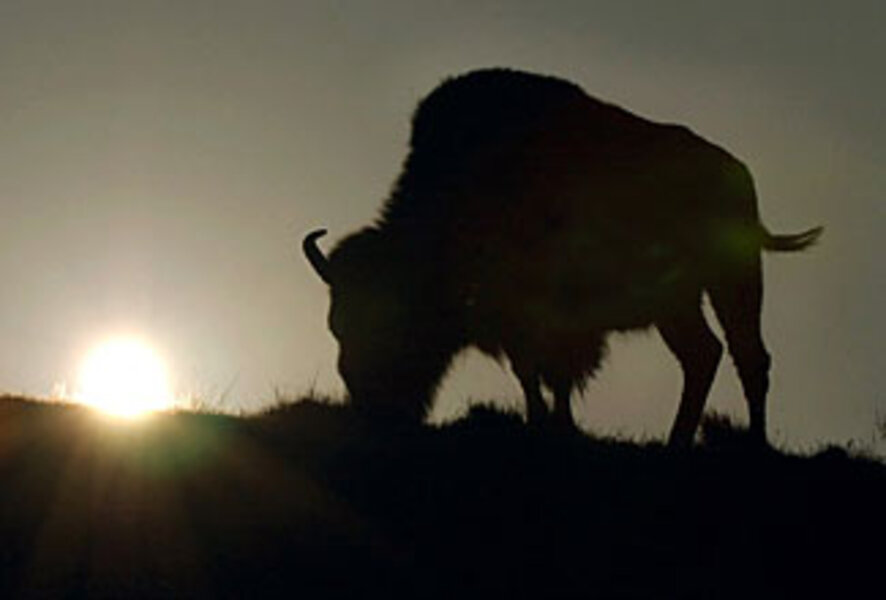Catalina bison get birth control to keep numbers down
Loading...
| Catalina Island, Calif.
Fourteen majestic, shaggy bison were brought to this windswept island southwest of Los Angeles for a film shoot in the 1920s. Left behind, they multiplied to 600 by the 1960s, causing havoc to delicate plants, rolling and tramping vegetation and other protective barriers that keep deer away from threatened ironwood trees.
Now, conservation authorities are experimenting with birth control methods to keep the herd on this 22-mile long island under control. It's an approach that some animal activists say should become the model for managing wild animal populations the world over.
The idea involves annual injections of a wildlife contraceptive called porcine zona pellucida (PZP). It can be used on populations ranging from feral cats to wild stallions and urban deer.
"This is an effective, humane and cost effective way to manage not all, but many wildlife populations," says Jay Kirkpatrick, director of ZooMontana's Science and Conservation Center in Billings, Mont., a consultant on the project.
Charged with managing 88 percent of the island, the Catalina Island Conservancy has had some public relations disasters in the past, most notably when it hired sharpshooters to shoot goats and pigs from helicopters in an effort to cull their populations. The conservancy later began sending bison to Indian reservations in South Dakota.
But the cost of that became prohibitive, reaching $100,000 for a roundup last fall.
The new program will cost about $200,000 over five years, with animal protection group, In Defense of Animals (IDA), picking up 25 percent and the Offield Family Foundation paying another $107,000.
"This is a unique historical event that is a solution to a problem that should be carried across the globe to other continents," says Bill Dyer, president of the IDA.
The conservancy unveiled its process Nov. 20 to media outlets which filmed about a dozen of the female bison being herded, one at a time, into corral where they were pinned in, injected, numbered, and then let go.
"The key to this process is to be good and calm," says Lenny Altherr, director of financial management for the conservancy who is nicknamed "the bison whisperer."
"Being low key and mellow is less stressful for the animals and their handlers," he adds.
The program has received some criticism, however, from both hunters and habitat specialists who decry the loss of the bison population. Some habitat specialists also say the birth control effort interferes with the complexities of natural selection.
"[T]here are just too few wild buffalo remaining on their native habitat in North America who retain their identity as a wildlife species," says Darrell Geist, habitat coordinator for the Buffalo Field Campaign, a non-profit group dedicated to protecting the last, wild bison herd at Yellowstone Park. "We have to start treating bison as the native species they are, and give them room to roam in habitat to fulfill their evolutionary potential as a wildlife species. Using livestock techniques on wild bison is one reason why American bison is ecologically extinct in its native range that once spanned over two billion acres."
But conservation officials say that letting the animals be totally free would destroy dozens of plants and animals found nowhere else.
"All of the impacts of animals – chewing plants, stomping ground – are related to overpopulation and reproduction," says Mr. Kirkpatrick. "Deal with that and you have the key to all the other symptoms."
On Assateague Island off the east coast, he says, the National Park Service has not had to remove a horse for 20 years after it started using birth control. And the use of contraceptives in 13 different game parks in Africa has prevented culling among wild elephant populations.
"Success here could help break through to many of the animal management agencies which can't come to grips with the simple fact that reproduction is the problem," he says.
----
Follow us on Twitter.





